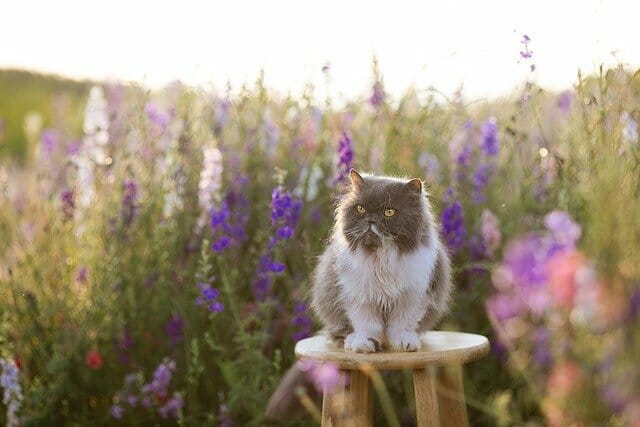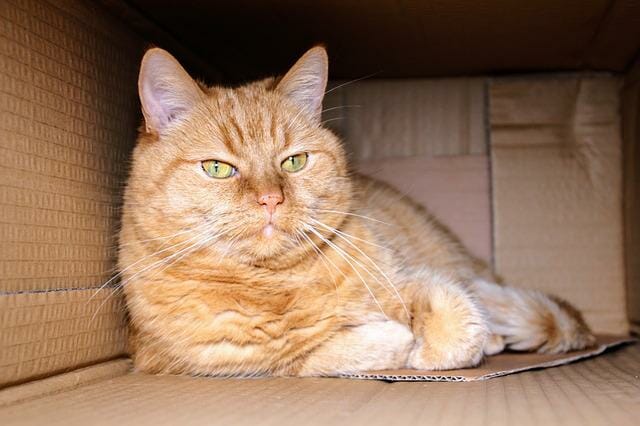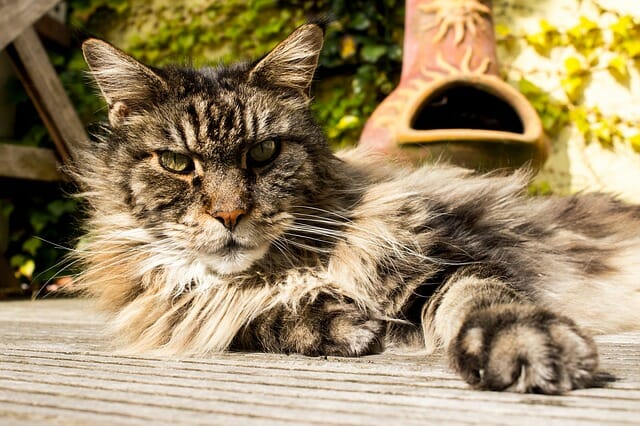When Does a Cat Stop Growing: Factors That Affect Cat Growth
Cats typically stop growing around 6 to 12 months old. During their first year, kittens experience rapid growth and development. However, even after they have stopped growing, cats may continue to gain or lose weight depending on their diet, exercise, and overall health.
The growth of cats can be affected by their genetics, nutrition, exercise, health, and environmental factors. Therefore, providing your cat with a balanced diet and regular exercise is important to help maintain a healthy weight and prevent obesity-related health problems.


Table of Contents
Factors That Affect Cat Growth
Genetics
Each cat breed’s genetic makeup can influence its size, weight, and other physical characteristics. Some breeds, for example, are naturally larger and heavier than others, while some are known for their small size and delicate features.
The breed can determine the body size and weight of a cat. For example, the Maine Coon breed is known for its large size and can weigh up to 20 pounds, while the Singapura breed is one of the smallest breeds, weighing only around 8 pounds.
Genetics can influence a cat’s bone structure, affecting its size and weight. Some breeds, such as the Siamese, have a more slender bone structure, while others, like the Persian, have a more robust bone structure. Genetics can also affect a cat’s coat color and texture. Some breeds, like the Siamese, have a pointed coat pattern, while others, like the Persian, have a long, fluffy coat.
Further, genetics can play a role in determining a cat’s susceptibility to certain health conditions that can impact its growth and development. For example, some breeds are more prone to obesity, while others may be predisposed to certain genetic disorders that can affect their growth.
Nutrition
Proper nutrition is essential to support the growth and development of kittens and maintain the health and well-being of adult cats. Cats require a certain amount of calories daily to support their growth and development. Kittens require more calories than adult cats to support their rapid growth. However, feeding your cat too few calories can lead to stunted growth, while feeding too many calories can lead to obesity.
Protein is an essential nutrient that supports muscle development and overall growth. Kittens require more protein in their diet than adult cats to support their rapid growth. Fat is another important nutrient that provides energy and supports healthy growth. However, feeding too much fat can lead to weight gain and other health problems.


Vitamins and minerals are essential for the growth and development of cats. For example, calcium and phosphorus are important for bone development, while vitamin A supports eye and skin health. Water is essential for proper digestion and nutrient absorption. Dehydration can lead to poor health and growth in cats.
The frequency and amount of food you feed your cat can also impact its growth and development. For example, kittens require smaller, more frequent meals, while adult cats can usually be fed larger, less frequent meals.
It’s important to provide your cat with a balanced diet that meets its unique nutritional needs. Consult your veterinarian to determine the appropriate diet for your cat’s age, breed, and overall health. It’s also essential to monitor your cat’s weight and adjust its diet to promote healthy growth and prevent obesity-related health problems.
Exercise
Exercise helps promote the development of lean muscle mass in cats. Strong muscles support healthy growth and development and improve physical health and well-being. It can also help support bone development and improve bone density in cats. In addition, regular physical activity can help prevent bone loss and maintain healthy bones throughout a cat’s life.
Also, exercise is essential for maintaining a healthy weight in cats. Obesity can lead to various health problems, including diabetes, heart disease, and joint problems. In addition, regular exercise can help prevent obesity and promote healthy growth and development. In addition, exercise can further promote mental health and well-being in cats. In addition, regular physical activity can reduce stress and anxiety, improve mood, and promote mental health.
It’s important to provide your cat with opportunities for regular physical activity. This can include playing with toys, climbing, running, and exploring their environment. It’s also essential to monitor your cat’s activity level and adjust its exercise routine to promote healthy growth and development.
Health
Various health conditions can affect a cat’s growth, including genetic disorders, infectious diseases, and chronic health problems. Health problems can impact a cat’s ability to absorb and utilize nutrients, impacting its growth and development. For example, cats with chronic digestive problems may have difficulty absorbing nutrients from their food, which can lead to poor growth and development.
Hormonal imbalances can affect a cat’s growth and development. For example, cats with hypothyroidism may have a slower metabolism, leading to slower growth and development. Also, chronic health problems such as diabetes, kidney disease, and heart disease can impact a cat’s overall health and well-being, affecting its growth and development.
Infectious diseases such as feline leukemia virus (FeLV) and feline immunodeficiency virus (FIV) can weaken a cat’s immune system, making them more susceptible to other health problems impacting growth and development. Some genetic disorders can further impact a cat’s growth and development. For example, cats with dwarfism may have stunted growth due to a genetic mutation.
Environmental Factors


The environment in which a cat lives can impact its physical health, mental well-being, and overall growth. Socialization is essential for healthy growth and development in cats. However, poorly socialized cats may develop behavior problems impacting their physical and mental health.
Stress can have a significant impact on a cat’s growth and development. For example, cats that experience chronic stress may have weakened immune systems, reduced appetite, and other health problems that can impact their growth. Also, exposure to environmental toxins can impact a cat’s growth and development. For example, exposure to chemicals in household cleaners can lead to respiratory problems and skin irritation.
Access to food, water, and shelter can further impact a cat’s growth and development. Cats that do not have access to sufficient resources may experience stunted growth, poor health, and other problems. Temperature can also impact a cat’s growth and development. Exposure to extreme temperatures can lead to health problems such as hypothermia or heatstroke, impacting a cat’s overall health.
